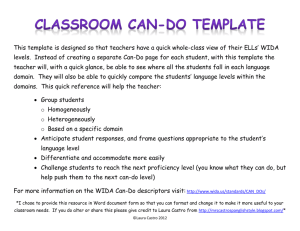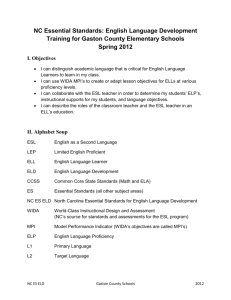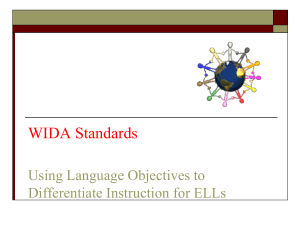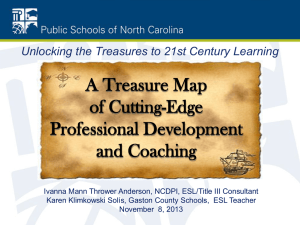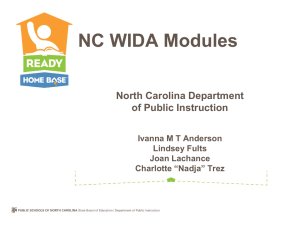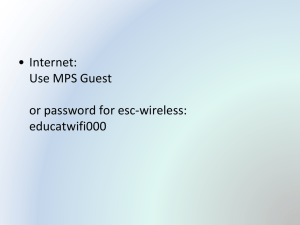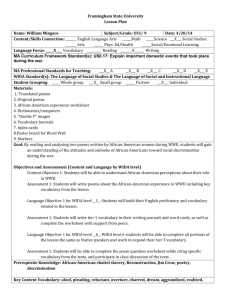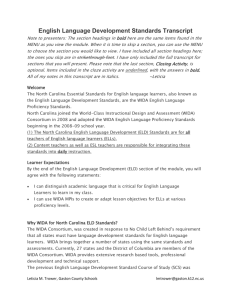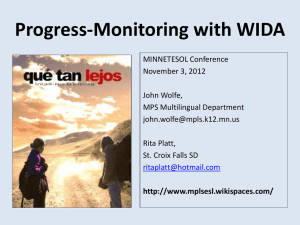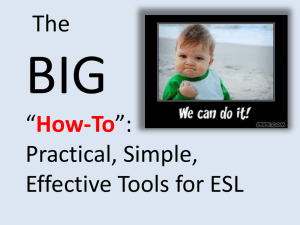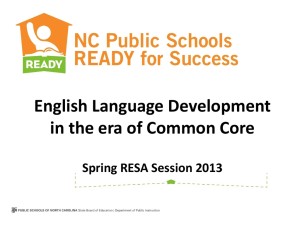Leveling-up-writing-96dpi - 3 C`s ESL Tools and Strategies
advertisement
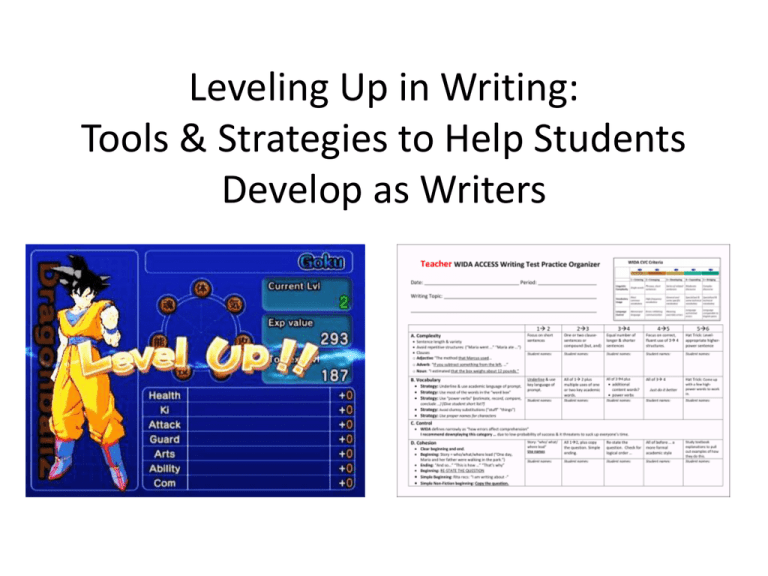
Leveling Up in Writing: Tools & Strategies to Help Students Develop as Writers Rita & John •ritaplatt@hotmail.com • john.wolfe@mpls.k12.mn.us •http://www.weteachwelearn.org/tag/rita-platt/ • http://mplsesl.wikispaces.com/Home+Page • @ritaplatt • @johnwolfe3rd • • Rita Platt is a Nationally Board Certified teacher. Her experience includes teaching learners of all levels from kindergarten to graduate student. She currently is a Library Media & Reading Specialist for the St. Croix Falls SD in Wisconsin, teaches graduate courses for the Professional Development Institute, and consults with local school districts. John Wolfe is a teacher on special assignment for the Multilingual Department at the Minneapolis Public School District. He has worked with students at all levels as well as provided professional development to fellow teachers. His areas of expertise include English Language Learners, literacy, and integrated technology. Relax … Everything (and more) is on The Wiki http://www.mplsesl.wikispaces.com/ Leveling Up: Ground to Cover 1. Why it’s okay to Hack the ACCESS Writing Test • • • • • Success Criteria & Visible Learning Discrepant scores WIDA’s “theory of language development” Deliberate Practice and mastery Deliberate Practice and “chameleon pedagogy” 2. How to Hack the ACCESS Writing Test • • • • Understanding the scoring (hacking the anchor papers) Developing Practice Prompts Helping student focus Meaningful Peer Editing 3. WIDER than WIDA: Where from here? • Combining WIDA with Six Traits or other Learning Schemes • The Converging Research: The Daily, Separate ELD at ALL Proficiency Levels “Leveling Up on the WIDA ACCESS test.” Why it’s okay. John Hattie on … 1. Success Criteria Success criteria relate to knowledge of end points – that is, how do we know when we arrive? “Just Drive.” Imagine if I were simply to ask to get in your car and drive; at some unspecified time, I’ll let you know when you’ve arrived (if you arrive at all). For too many students, this is what learning feels like. 2. Discrepant Scores (Writing as a Lever for Leveling Up) Think of this as the Iron Law of High-Stakes Testing: What’s tested is taught; what isn’t tested is neglected. 3. WIDA’s Theory of Language Development 1 – Entering 2 – Emerging 3 – Developing 4 – Expanding 5 – Bridging Linguistic Complexity Single words Phrases, short sentences Series of related sentences Moderate discourse Vocabulary Usage Most common vocabulary High frequency vocabulary General and some specific vocabulary Specialized & Specialized & some technical technical vocabulary vocabulary Language Control Memorized language Errors inhibiting communication Meaning overrides errors Language w/minimal errors Control as Cohesion Opportunistic (you say what you have words for) Complex discourse Language comparable to English peers Increasingly Planful (You have enough language that you can organize and hold ideas in your head.) Basic Law of Learning: 4. Deliberate Practice Visible teaching and learning occurs when there is deliberate practice aimed at attaining mastery of the goal, when there is feedback given and sought, and when there are active, passionate, and engaging people (teacher, students, peers) participating in the act of learning. 5. Avoiding “Chameleon Pedagogy” Part II: How to Hack the Writing Test 1. Understanding the Scoring (study the anchor papers) If sample responses clarify expectations for us, isn’t it reasonable to provide similar guidance to the students? Complexity Vocabulary Control (Correctness) Cohesion Step 2: Provide practice opportunities http://tiny.cc/mldPrompts The WIDA Prompt We know what the prompt looks like … a 15-20 one-page writing task on a bizarre academic challenge. How often do students have a chance to practice this over the course of the year? Would it be useful to them to do similar, content-related tasks? Download all the W-APT stuff at the ELL2 Google Apps Site https://sites.google.com/a/mpls.k12.mn.us/ell2/w-apt Anatomy of a WIDA Prompt Academic Language task will “ride on a story” to avoid the huge syntactic complexity of decontextualized language) Graphic & visual supports Note: In WIDA, “graphic” means “written information radically stripped down” Often a “narrative frame” (the Prompt supports language about thinking, reasoning A “solved problem” Vocabulary box (which Level 1 to lower 3 will ignore – as they should.) Is this harder than a WIDA prompt? Maybe … because this was designed to do “doubleduty” as a content assessment. Anatomy of a WIDA Prompt Academic Language avoid the huge syntactic complexity of decontextualized language) Graphic & visual supports Note: In WIDA, “graphic” means “written information radically stripped down” Often a “narrative frame” (to A “solved problem” Vocabulary box Prompt supports language about thinking, reasoning Anatomy of a WIDA Prompt Teachers say they need multiple prompts … 3. Help students focus Bonus: Meaningful Peer Editing! WIDER than WIDA: Taking it further Combined with ELD Leveling Up: Ground to Cover 1. Why it’s okay to Hack the ACCESS Writing Test • • • • • Success Criteria & Visible Learning Discrepant scores WIDA’s “theory of language development” Deliberate Practice and mastery Deliberate Practice and “chameleon pedagogy” 2. How to Hack the ACCESS Writing Test • • • • Understanding the scoring (hacking the anchor papers) Developing Practice Prompts Helping student focus Meaningful Peer Editing 3. WIDER than WIDA: Where from here? • Combining WIDA with Six Traits or other Learning Schemes • The Converging Research: The Daily, Separate ELD at ALL Proficiency Levels Hack or not? You decide
